Blogs
Are You Suffering From Ingrown Toenails?
Types and Symptoms of Athlete’s Foot

Athlete's foot, medically known as tinea pedis, is a fungal infection that can occur between the toes, on the soles, and around the heels. Types of athlete's foot include interdigital, moccasin, vesicular, and ulcerative infections. Interdigital infections often start between the smallest toes, causing red, itchy, and peeling skin. Moccasin-type infections affect the sole and can make the skin appear dry and scaly. Vesicular infections produce painful, itchy blisters filled with fluid, and ulcerative infections involve open sores that can lead to additional bacterial infections. Symptoms include itching, burning, cracking, or thickened skin on the feet. Athlete's foot is highly contagious, often spread by walking barefoot in warm, damp environments like locker room showers or pool areas. A podiatrist can diagnose this infection by examining the skin, and, if needed, testing a skin sample to identify the fungus. Medical treatment may involve topical or oral antifungal medications to clear the infection and reduce the risk of complications. If you have a stubborn athlete's foot infection, it is suggested that you schedule an appointment with a podiatrist for advanced treatment.
Athlete’s Foot
Athlete’s foot is often an uncomfortable condition to experience. Thankfully, podiatrists specialize in treating athlete’s foot and offer the best treatment options. If you have any questions about athlete’s foot, consult with Dr. Dean D. Hinners from Illinois. Our doctor will assess your condition and provide you with quality treatment.
What Is Athlete’s Foot?
Tinea pedis, more commonly known as athlete’s foot, is a non-serious and common fungal infection of the foot. Athlete’s foot is contagious and can be contracted by touching someone who has it or infected surfaces. The most common places contaminated by it are public showers, locker rooms, and swimming pools. Once contracted, it grows on feet that are left inside moist, dark, and warm shoes and socks.
Prevention
The most effective ways to prevent athlete’s foot include:
- Thoroughly washing and drying feet
- Avoid going barefoot in locker rooms and public showers
- Using shower shoes in public showers
- Wearing socks that allow the feet to breathe
- Changing socks and shoes frequently if you sweat a lot
Symptoms
Athlete’s foot initially occurs as a rash between the toes. However, if left undiagnosed, it can spread to the sides and bottom of the feet, toenails, and if touched by hand, the hands themselves. Symptoms include:
- Redness
- Burning
- Itching
- Scaly and peeling skin
Diagnosis and Treatment
Diagnosis is quick and easy. Skin samples will be taken and either viewed under a microscope or sent to a lab for testing. Sometimes, a podiatrist can diagnose it based on simply looking at it. Once confirmed, treatment options include oral and topical antifungal medications.
If you have any questions, please feel free to contact one of our offices located in Metropolis and Eldorado, IL . We offer the newest diagnostic and treatment technologies for all your foot care needs.
Many Types of Foot Surgery
 There are many reasons why a patient would choose to have foot surgery performed. These may include correcting a foot deformity, relieving severe pain and discomfort, and providing easier mobility to the foot and ankle. There are different types of foot surgery that can be implemented, including removing a toenail, which may become necessary if an ingrown toenail becomes infected, and ankle replacement surgery which may relieve the pain from joints that are affected by arthritis. Additionally, diabetes may lead to a foot amputation, and this may be the result of extremely elevated insulin levels in the blood. If you are experiencing chronic foot conditions and are considering surgery, it is strongly suggested that you consult with a podiatrist who can correctly inform you so a proper decision can be reached.
There are many reasons why a patient would choose to have foot surgery performed. These may include correcting a foot deformity, relieving severe pain and discomfort, and providing easier mobility to the foot and ankle. There are different types of foot surgery that can be implemented, including removing a toenail, which may become necessary if an ingrown toenail becomes infected, and ankle replacement surgery which may relieve the pain from joints that are affected by arthritis. Additionally, diabetes may lead to a foot amputation, and this may be the result of extremely elevated insulin levels in the blood. If you are experiencing chronic foot conditions and are considering surgery, it is strongly suggested that you consult with a podiatrist who can correctly inform you so a proper decision can be reached.
Foot surgery is sometimes necessary to treat a foot ailment. To learn more, contact Dr. Dean D. Hinners of Illinois. Our doctor will assist you with all of your foot and ankle needs.
When Is Surgery Necessary?
Foot and ankle surgery is generally reserved for cases in which less invasive, conservative procedures have failed to alleviate the problem. Some of the cases in which surgery may be necessary include:
- Removing foot deformities like bunions and bone spurs
- Severe arthritis that has caused bone issues
- Cosmetic reconstruction
What Types of Surgery Are There?
The type of surgery you receive will depend on the nature of the problem you have. Some of the possible surgeries include:
- Bunionectomy for painful bunions
- Surgical fusion for realignment of bones
- Neuropathy decompression surgery to treat nerve damage
Benefits of Surgery
Although surgery is usually a last resort, it can provide more complete pain relief compared to non-surgical methods and may allow you to finally resume full activity.
Surgical techniques have also become increasingly sophisticated. Techniques like endoscopic surgery allow for smaller incisions and faster recovery times.
If you have any questions please feel free to contact one of our offices located in Metropolis and Eldorado, IL . We offer the newest diagnostic and treatment technologies for all your foot and ankle needs.
Two Types Of Heel Spurs
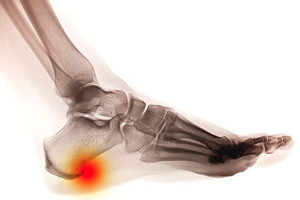 Patients who have developed a bone spur are often aware of the pain and discomfort it can cause. Heel spurs that develop on the bottom of the heel is classified as heel spur syndrome. When a bone spur forms at the back of the heel at the point where the Achilles tendon fits into the bone, it is known as insertional Achilles tendonitis. Heel spurs can develop as a result of frequently participating in running and jumping activities that can overstretch the plantar fascia. Limited range of motion can occur with Achilles tendonitis, and it may be more common among patients who are middle-age. If you have pain in your heel, it is strongly suggested that you consult with a podiatrist who can diagnose heel spurs, and offer the correct treatment for you.
Patients who have developed a bone spur are often aware of the pain and discomfort it can cause. Heel spurs that develop on the bottom of the heel is classified as heel spur syndrome. When a bone spur forms at the back of the heel at the point where the Achilles tendon fits into the bone, it is known as insertional Achilles tendonitis. Heel spurs can develop as a result of frequently participating in running and jumping activities that can overstretch the plantar fascia. Limited range of motion can occur with Achilles tendonitis, and it may be more common among patients who are middle-age. If you have pain in your heel, it is strongly suggested that you consult with a podiatrist who can diagnose heel spurs, and offer the correct treatment for you.
Heel spurs can be incredibly painful and sometimes may make you unable to participate in physical activities. To get medical care for your heel spurs, contact Dr. Dean D. Hinners from Illinois. Our doctor will do everything possible to treat your condition.
Heels Spurs
Heel spurs are formed by calcium deposits on the back of the foot where the heel is. This can also be caused by small fragments of bone breaking off one section of the foot, attaching onto the back of the foot. Heel spurs can also be bone growth on the back of the foot and may grow in the direction of the arch of the foot.
Older individuals usually suffer from heel spurs and pain sometimes intensifies with age. One of the main condition's spurs are related to is plantar fasciitis.
Pain
The pain associated with spurs is often because of weight placed on the feet. When someone is walking, their entire weight is concentrated on the feet. Bone spurs then have the tendency to affect other bones and tissues around the foot. As the pain continues, the feet will become tender and sensitive over time.
Treatments
There are many ways to treat heel spurs. If one is suffering from heel spurs in conjunction with pain, there are several methods for healing. Medication, surgery, and herbal care are some options.
If you have any questions feel free to contact one of our offices located in Metropolis and Eldorado, IL . We offer the latest in diagnostic and treatment technology to meet your needs.
Foot Problems That May Happen From Age
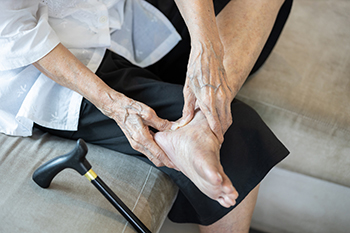
Foot pain becomes more common with age due to changes in foot structure and function. As people get older, the natural fat padding on the soles can wear down, leading to reduced shock absorption and discomfort when walking or standing. The arches may flatten, and the skin may become drier, which increases the risk of cracks and irritation. Women, particularly those who have worn high heels or performed in ballet, may be more prone to bunions, hammertoes, and corns. Weight gain, pregnancy, and prolonged standing for work can add stress to the feet, while conditions such as arthritis or circulatory issues may further complicate foot health. A podiatrist can assess changes in foot shape, check for underlying conditions, and provide options such as orthotics, shoe recommendations, or surgery, when needed. If you are an older adult experiencing foot pain, it is suggested that you schedule an appointment with a podiatrist for treatment.
If you need your feet checked, contact Dr. Dean D. Hinners of Illinois. Our doctor will attend to all of your foot and ankle needs and provide you with quality treatment.
Geriatrics and Podiatry
When people age, some common issues that may occur are bone density loss, dry skin, poor circulation, and rough brittle nails. These issues may also affect your foot health if the necessary steps are not taken to alleviate the problems.
It is important to take care of your feet because feet that are injured or diseased can affect your overall health. Having painful feet hinders your ability to do daily activities or may decrease your willingness to do the things that you need to do.
Visiting Your Geriatrician
As we age, health problems become more likely, so it is essential to visit your doctor for check-ups to ensure that you are doing the best you can to take care of your health. It is recommended to check your feet frequently for any possible cuts, bruises, swelling, corns or any other irregularities.
Taking Care of Elderly Feet
Cracked or dry feet can be treated by applying moisturizer often. It is also important not to wear old socks because the older the sock is, the higher the possibility there will be that there is bacteria there. Wear fresh socks and make sure they fit properly.
Proper foot health means that you can have a more active lifestyle and you will not be bogged down by pain. Foot health also leads to good circulation, which is paramount for overall health.
If you have any questions, please feel free to contact one of our offices located in Metropolis and Eldorado, IL . We offer the newest diagnostic tools and technology to treat your foot and ankle needs.
Foot Safety Tips in the Workplace

Maintaining foot safety in the workplace is essential for preventing injuries and ensuring overall comfort during long hours of standing or walking. Wearing the right shoes that provide proper support, fit well, and match the demands of the job can help reduce the risk of strain or accidents. Regularly inspecting footwear for signs of wear, such as thinning soles or damaged laces, is important to maintain protection and stability. Foot protection should always be used when working in environments with heavy objects or sharp materials, such as steel toe boots or puncture-resistant soles. Being aware of workplace hazards, including slippery surfaces, uneven flooring, or falling objects, helps employees take appropriate precautions. If you have sustained a foot or ankle injury while working, it is suggested that you promptly contact a podiatrist who can offer correct treatment solutions and help with work comfort on the job.
Preventing falls among the elderly is very important. If you are older and have fallen or fear that you are prone to falling, consult with Dr. Dean D. Hinners from Illinois. Our doctor will assess your condition and provide you with quality advice and care.
Every 11 seconds, an elderly American is being treated in an emergency room for a fall related injury. Falls are the leading cause of head and hip injuries for those 65 and older. Due to decreases in strength, balance, senses, and lack of awareness, elderly persons are very susceptible to falling. Thankfully, there are a number of things older persons can do to prevent falls.
How to Prevent Falls
Some effective methods that older persons can do to prevent falls include:
- Enrolling in strength and balance exercise program to increase balance and strength
- Periodically having your sight and hearing checked
- Discuss any medications you have with a doctor to see if it increases the risk of falling
- Clearing the house of falling hazards and installing devices like grab bars and railings
- Utilizing a walker or cane
- Wearing shoes that provide good support and cushioning
- Talking to family members about falling and increasing awareness
Falling can be a traumatic and embarrassing experience for elderly persons; this can make them less willing to leave the house, and less willing to talk to someone about their fears of falling. Doing such things, however, will increase the likelihood of tripping or losing one’s balance. Knowing the causes of falling and how to prevent them is the best way to mitigate the risk of serious injury.
If you have any questions, please feel free to contact one of our offices located in Metropolis and Eldorado, IL . We offer the newest diagnostic and treatment technologies for all your foot care needs.
Ankle Sprains and Ongoing Weakness
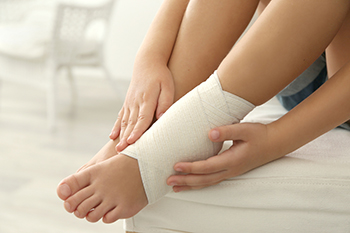
Ankle sprains happen often, especially during sports, exercise, or even from simply stepping the wrong way. They occur when the ligaments surrounding the ankle stretch or tear, usually from the foot turning inward. While many people heal with rest and care, some do not fully recover. This can lead to a long-term issue called chronic ankle instability, where the ankle feels weak, wobbly, or keeps giving out. People who have had more than one sprain are more likely to develop this ongoing problem. It can affect balance, movement, and increase the risk of future injuries. Strengthening the ankle, wearing the right shoes, and early treatment can help prevent long-term damage. If you have had repeated ankle sprains or still feel unsteady, it is suggested that you see a podiatrist for appropriate treatment.
Ankle sprains are common but need immediate attention. If you need your feet checked, contact Dr. Dean D. Hinners from Illinois. Our doctor can provide the care you need to keep you pain-free and on your feet.
How Does an Ankle Sprain Occur?
Ankle sprains take place when the ligaments in your ankle are torn or stretched beyond their limits. There are multiple ways that the ankle can become injured, including twisting or rolling over onto your ankle, putting undue stress on it, or causing trauma to the ankle itself.
What Are the Symptoms?
- Mild to moderate bruising
- Limited mobility
- Swelling
- Discoloration of the skin (depending on severity)
Preventing a Sprain
- Wearing appropriate shoes for the occasion
- Stretching before exercises and sports
- Knowing your limits
Treatment of a Sprain
Treatment of a sprain depends on the severity. Many times, people are told to rest and remain off their feet completely, while others are given an air cast. If the sprain is very severe, surgery may be required.
If you have suffered an ankle sprain previously, you may want to consider additional support such as a brace and regular exercises to strengthen the ankle.
If you have any questions please feel free to contact one of our offices located in Metropolis and Eldorado, IL . We offer the newest diagnostic and treatment technologies for all your foot and ankle needs.
The Link Between Diabetes and Swollen Feet
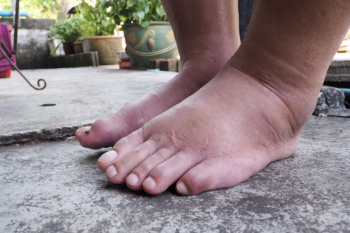
Diabetes affects the body in many ways, and one common issue is swollen feet. High blood sugar levels can damage blood vessels and nerves, leading to poor circulation and fluid retention in the lower extremities. This swelling, known as edema, can cause discomfort and may increase the risk of infections and ulcers. Nerve damage, or neuropathy, can further complicate the issue by reducing sensation, making it difficult to notice injuries or pressure points. Poor circulation slows healing, increasing the likelihood of complications. Managing blood sugar levels, wearing supportive footwear, and elevating the feet can help reduce swelling. If you have diabetes and your feet are noticeably swollen, it is suggested that you are under the care of a podiatrist who can help you to manage this condition.
Diabetic foot care is important in preventing foot ailments such as ulcers. If you are suffering from diabetes or have any other concerns about your feet, contact Dr. Dean D. Hinners from Illinois. Our doctor can provide the care you need to keep you pain-free and on your feet.
Diabetic Foot Care
Diabetes affects millions of people every year. The condition can damage blood vessels in many parts of the body, especially the feet. Because of this, taking care of your feet is essential if you have diabetes, and having a podiatrist help monitor your foot health is highly recommended.
The Importance of Caring for Your Feet
- Routinely inspect your feet for bruises or sores.
- Wear socks that fit your feet comfortably.
- Wear comfortable shoes that provide adequate support.
Patients with diabetes should have their doctor monitor their blood levels, as blood sugar levels play such a huge role in diabetic care. Monitoring these levels on a regular basis is highly advised.
It is always best to inform your healthcare professional of any concerns you may have regarding your feet, especially for diabetic patients. Early treatment and routine foot examinations are keys to maintaining proper health, especially because severe complications can arise if proper treatment is not applied.
If you have any questions please feel free to contact one of our offices located in Metropolis and Eldorado, IL . We offer the newest diagnostic and treatment technologies for all your foot and ankle needs.
Why Live with Pain and Numbness in Your Feet?
Treating Ingrown Toenail Pain

An ingrown toenail occurs when a toenail grows improperly into the surrounding skin, or when the skin around the nail grows too quickly, partially covering the nail. Ingrown toenails often result from improper nail trimming, such as cutting the nail into a curve instead of straight across, or wearing shoes that are too narrow and place excessive pressure on the toes. At first, an ingrown toenail may cause mild discomfort, but as it worsens, the area can become painful, red, and swollen, especially when pressure is applied. If left untreated, infection may develop, leading to pus formation and increased pain. A podiatrist can treat the toenail by gently lifting the edge of it and placing sterile cotton or a flexible tube beneath it to relieve pressure. If the nail is deeply ingrown or infected, this foot doctor may numb the toe and remove the ingrown section to reduce inflammation and prevent recurrence. If you need help with a painful or infected ingrown toenail, it is suggested that you schedule an appointment with a podiatrist for an exam and appropriate treatment solutions.
Ingrown toenails may initially present themselves as a minor discomfort, but they may progress into an infection in the skin without proper treatment. For more information about ingrown toenails, contact Dr. Dean D. Hinners of Illinois. Our doctor can provide the care you need to keep you pain-free and on your feet.
Ingrown Toenails
Ingrown toenails are caused when the corner or side of a toenail grows into the soft flesh surrounding it. They often result in redness, swelling, pain, and in some cases, infection. This condition typically affects the big toe and may recur if it is not treated properly.
Causes
- Improper toenail trimming
- Genetics
- Improper shoe fitting
- Injury from pedicures or nail picking
- Abnormal gait
- Poor hygiene
You are more likely to develop an ingrown toenail if you are obese, have diabetes, arthritis, or have any fungal infection in your nails. Additionally, people who have foot or toe deformities are at a higher risk of developing an ingrown toenail.
Symptoms
Some symptoms of ingrown toenails are redness, swelling, and pain. In rare cases, there may be a yellowish drainage coming from the nail.
Treatment
Ignoring an ingrown toenail can have serious complications. Infections of the nail border can progress to a deeper soft-tissue infection, which can then turn into a bone infection. You should always speak with your podiatrist if you suspect you have an ingrown toenail, especially if you have diabetes or poor circulation.
If you have any questions, please feel free to contact one of our offices located in Metropolis and Eldorado, IL . We offer the newest diagnostic and treatment technologies for all your foot care needs.
More...
Facts About Cracked Heels

Cracked heels develop when the skin on the feet becomes dry and loses its elasticity, leading to painful fissures. One common cause is prolonged pressure on the feet from standing for long hours or wearing shoes with inadequate support. Dry skin, often worsened by cold weather or dehydration, makes the heels more prone to cracking. Athlete's foot, a fungal infection, can cause peeling and flaking that leads to skin breakdown. Conditions such as eczema and psoriasis contribute to excessive dryness and inflammation, further increasing the risk of heel fissures. Without proper care, cracks can deepen and cause discomfort or infection. If you notice the beginning symptoms of cracked heels, it is suggested that you promptly contact a podiatrist who can offer you effective relief and prevention tips.
Cracked heels are unsightly and can cause further damage to your shoes and feet. If you have any concerns, contact Dr. Dean D. Hinners from Illinois. Our doctor can provide the care you need to keep you pain-free and on your feet.
Cracked Heels
Cracked heels appear unappealing and can make it harder for you walk around in sandals. Aside from looking unpleasant, cracked heels can also tear stockings, socks, and wear out your shoes. There are several methods to help restore a cracked heel and prevent further damage.
How Do You Get Them?
Dry skin is the number one culprit in creating cracked heels. Many athletes, walkers, joggers, and even swimmers suffer from cracked heels. Age and skin oil production play a role to getting cracked heels as well.
Promote Healing
Over the counter medicines can help, especially for those that need instant relief or who suffer from chronic dry feet.
Wear Socks – Wearing socks with medicated creams helps lock in moisture.
Moisturizers – Applying both day and night will help alleviate dryness which causes cracking.
Pumice Stones – These exfoliate and remove dead skin, which allows for smoother moisturizer application and better absorption into the skin.
Change in Diet
Eating healthy with a well-balanced diet will give the skin a fresh and radiant look. Your body responds to the kinds of food you ingest. Omega-3 fatty acids and zinc supplements can also revitalize skin tissue.
Most importantly, seek professional help if unsure how to proceed in treating cracked heels. A podiatrist will help you with any questions or information needed.
If you have any questions, please feel free to contact one of our offices located in Metropolis and Eldorado, IL . We offer the newest diagnostic and treatment technologies for all your foot care needs.
When Every Step Hurts
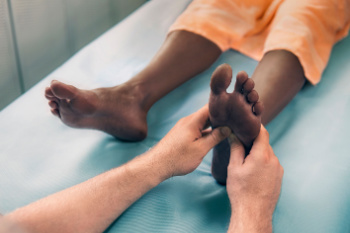
Foot and ankle pain is not just an inconvenience. It is a signal that something is not right. Sometimes, the culprit is as simple as wearing poorly fitting shoes that squeeze, rub, or fail to support your feet properly. Other times, the pain runs deeper. Osteoarthritis wears down cartilage, making movement stiff and achy. Inflammatory arthritis can leave joints swollen, tender, and painfully stiff in the morning. Some conditions go beyond the joints. Connective tissue diseases weaken ligaments and tendons, leading to instability. Poor circulation starves the feet of oxygen, causing cramping and slow healing. Nerve damage, often from diabetes, may bring burning pain, numbness, or tingling that worsens over time. If you have foot or ankle pain that lingers or worsens, it is suggested that you visit a podiatrist who can help pinpoint the problem, and offer solutions for relief.
Arthritis can be a difficult condition to live with. If you are seeking treatment, contact Dr. Dean D. Hinners from Illinois. Our doctor can provide the care you need to keep you pain-free and on your feet.
Arthritic Foot Care
Arthritis is a joint disorder that involves the inflammation of different joints in your body, such as those in your feet. Arthritis is often caused by a degenerative joint disease and causes mild to severe pain in all affected areas. In addition to this, swelling and stiffness in the affected joints can also be a common symptom of arthritis.
In many cases, wearing ill-fitting shoes can worsen the effects and pain of arthritis. Wearing shoes that have a lower heel and extra room can help your feet feel more comfortable. In cases of rheumatoid arthritis, the arch in your foot may become problematic. Buying shoes with proper arch support that contour to your feet can help immensely.
Alleviating Arthritic Pain
- Exercises that stretch the foot can prevent further pain and injury and increase mobility
- Most of the pain can be alleviated with anti-inflammatory drugs, heat, and topical medications
- Massages can help temporarily alleviate pain.
It is best to see your doctor for the treatment that is right for your needs and symptoms. Conditions vary, and a podiatrist can help you determine the right method of care for your feet.
If you have any questions, please feel free to contact one of our offices located in Metropolis and Eldorado, IL . We offer the newest diagnostic tools and technology to treat your foot and ankle needs.
Managing Hammertoe
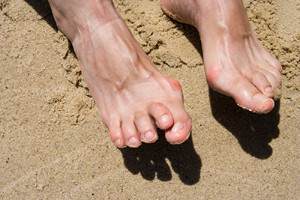
Hammertoe is a foot deformity where one or more toes bend downward at the middle joint, resembling a hammer. This condition can cause discomfort, pain, and difficulty when walking, especially if left untreated. The most common symptoms include a rigid or flexible bent toe, pain in the affected area, and the development of corns or calluses from pressure. Hammertoe is often caused by wearing tight or ill-fitting shoes, muscle imbalances, or genetics. People with flat feet or those with a history of foot injuries are also at higher risk. A podiatrist can diagnose hammertoe through a physical exam and imaging tests. Treatment typically starts with conservative methods, such as wearing wider shoes, using custom orthotics, or performing toe exercises. If these methods do not alleviate symptoms, surgery may be considered to straighten the toe. If you have this condition, it is suggested that you schedule an appointment with a podiatrist for personalized treatment and care.
Hammertoe
Hammertoes can be a painful condition to live with. For more information, contact Dr. Dean D. Hinners from Illinois. Our doctor will answer any of your foot- and ankle-related questions.
Hammertoe is a foot deformity that affects the joints of the second, third, fourth, or fifth toes of your feet. It is a painful foot condition in which these toes curl and arch up, which can often lead to pain when wearing footwear.
Symptoms
- Pain in the affected toes
- Development of corns or calluses due to friction
- Inflammation
- Redness
- Contracture of the toes
Causes
Genetics – People who are genetically predisposed to hammertoe are often more susceptible
Arthritis – Because arthritis affects the joints in your toes, further deformities stemming from arthritis can occur
Trauma – Direct trauma to the toes could potentially lead to hammertoe
Ill-fitting shoes – Undue pressure on the front of the toes from ill-fitting shoes can potentially lead to the development of hammertoe
Treatment
Orthotics – Custom made inserts can be used to help relieve pressure placed on the toes and therefore relieve some of the pain associated with it
Medications – Oral medications such as anti-inflammatories or NSAIDs could be used to treat the pain and inflammation hammertoes causes. Injections of corticosteroids are also sometimes used
Surgery – In more severe cases where the hammertoes have become more rigid, foot surgery is a potential option
If you have any questions please contact one of our offices located in Metropolis and Eldorado, IL . We offer the newest diagnostic and treatment technologies for all your foot and ankle needs.



